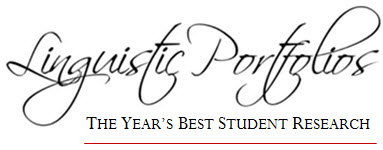
Abstract
This article describes the acoustic characteristics of female Saudi-accented English vowels and uses acoustic phonetic measurements to assess the intelligibility of their vowels. Peterson & Barney’s (1952) and Hillenbrand et al.’s (1995) methodology is slightly modified. Whereas their studies extracted various measurements, including F1 and F2 of vowels in General American English (GAE), the current study examines measurements extracted from 11 monophthong phonemic English vowels in running speech produced by 23 female Saudi EFL teachers. Intelligibility assessments of their vowels are based on Koffi’s (2019) Acoustic Masking and Intelligibility (AMI) theory. He contends that intelligibility of vowels can be measured instrumentally by comparing the F1 of vowels because this formant carries 80% of the acoustic energy found in vowels. The AMI theory also combines Just Noticeable Differences (JND) thresholds and Relative Functional Load (RFL) calculations to gauge severity of masking and intelligibility. The findings in this article are based on 1,518 measured tokens. The study reveals that the fleece vowel [i], the kiss vowel [ɪ] and the face vowel [e] are the most problematic for Saudi speakers of English.
Creative Commons License

This work is licensed under a Creative Commons Attribution-NonCommercial-No Derivative Works 4.0 International License.
Recommended Citation
Duris, Mahdi
(2021)
"Vowel Intelligibility Analysis of Female Saudi Spoken English,"
Linguistic Portfolios: Vol. 10, Article 3.
Available at:
https://repository.stcloudstate.edu/stcloud_ling/vol10/iss1/3



Author Bio
Mahdi Duris is a Ph.D. Applied Linguistics and Technology student at Iowa State University. He holds a B.S. in Management from George Mason University (2006). After teaching financial literacy in Spanish for 6 years, he then obtained a CELTA certificate from Cambridge University (2012) to teach English as a Second Language to adults. He taught English in the Kingdom of Saudi Arabia for 5 years. His research focus includes pronunciation, acoustic phonetics and technology assisted L2 learning. He can be reached at mduris@iastate.edu.